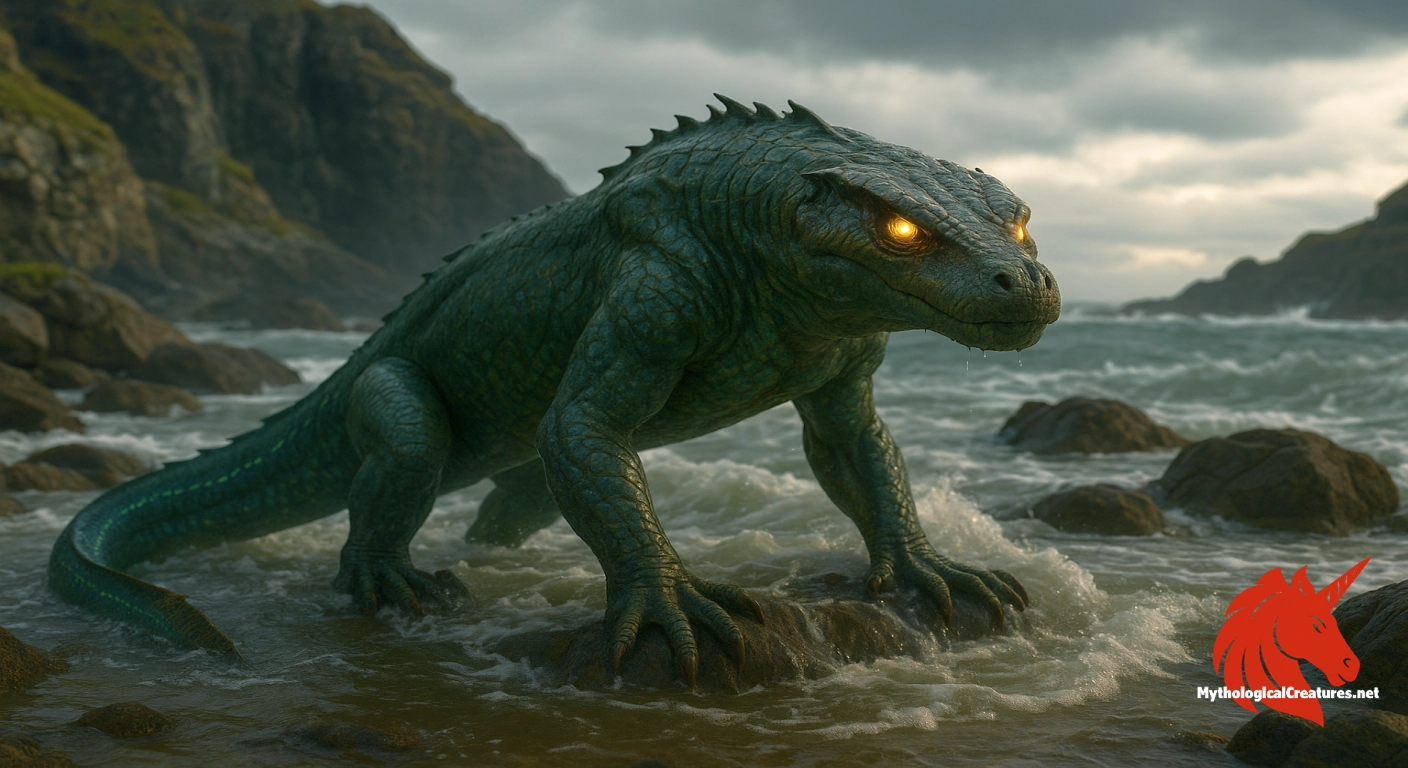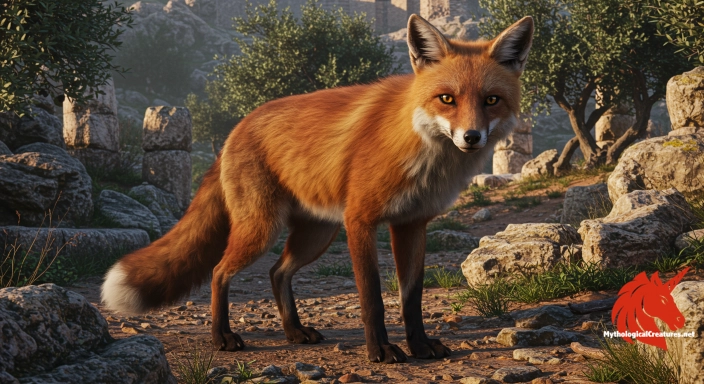Taniwha: Taniwha are large supernatural beings from Māori mythology that inhabit deep pools, rivers, dark caves, and the sea.

Taniwha
Taniwha - Taniwha are culturally significant in Māori traditions, symbolising both the protective and unpredictable forces of nature.
Origins & First Encounters
Taniwha are ancient and revered figures deeply embedded in the ancestral narratives of the Maori people. They are believed to inhabit the primordial depths of rivers, lakes, and the vast sea, embodying both awe and mystery in their natural surroundings. Their roles as both protective guardians and fearsome entities illustrate a dual nature that has captivated generations. The earliest accounts of taniwha can be traced to rich oral traditions and early settler records, where their mystique was interwoven with the rhythms of nature. Their origins are shrouded in the mists of time, symbolically linking them to creation myths and the elemental forces that shape the landscape. Over the centuries, these beings have come to represent both benevolence and potential menace, reflecting the intricate balance inherent in the natural world. This duality underscores the Maori belief in nature’s capacity to nurture as well as to challenge human existence. Taniwha continue to inspire cultural practices and artistic expression, serving as a reminder to respect and live in harmony with the environment. Their enduring presence in myth encourages a deeper understanding of the relationship between people and the wild. Local legends vividly recount the adventures, lessons, and warnings entwined with the presence of these supernatural creatures.
Source Texts & Tale Variants
Ancient chants, oral recitations, and intricately carved panels within traditional meeting houses have preserved the multifaceted narratives of taniwha. These diverse sources weave together a rich tapestry of stories where the beings assume roles that range from vigilant guardians to formidable forces of nature. Early ethnographic accounts and settler records further enriched these tales, blending indigenous insights with external observations. A plethora of story variants exists, with some versions portraying taniwha as benevolent custodians of sacred sites while others depict them as wild and unpredictable entities. In certain traditions, they are seen as descendants of powerful ancestral figures, while in others their emergence is wrapped in mystery and the magic of untamed waters. Oral history and artistic representations have continuously evolved, adding layers of complexity and regional nuance to their mythos. The eclectic nature of these sources ensures that each retelling provides a fresh perspective on the roles and symbolism of taniwha. Such a wealth of narratives reflects both the diversity of Maori culture and the living essence of these legendary creatures. The continual reinterpretation of these beings in modern storytelling further attests to their timeless relevance. In every variant, taniwha serve as a bridge between the natural world and the spiritual heritage of the people.
Form & Powers
The physical form of a taniwha is as enigmatic as the legends that surround it. Descriptions often detail a serpentine creature with a long, undulating body that exudes an aura of ancient power and mystery. Many narratives speak of scales that shimmer in shades of green, blue, or dark earthy tones, mirroring the colours of their watery abodes. Some accounts describe them as possessing multiple limbs or fins, which facilitate graceful and swift movement through both rivers and seas. In certain traditions, taniwha are portrayed with prominent eyes, formidable teeth, and even horn-like protrusions that heighten their intimidating presence. Their size is variable, with some tales depicting them as colossal beings rivaling the span of a traditional canoe, while others suggest a more elusive, narrowly defined form. Every physical attribute is imbued with symbolism, representing ancestral connections and the elemental forces of nature. Intricate patterns and markings often adorn their bodies, hinting at an inherent natural camouflage and a deep link to the environment. These detailed renderings invite observers to appreciate both the aesthetic diversity and the storied essence of the taniwha. Through such vivid portrayals, the creature occupies a space where the tangible world meets mythic imagination.
Regional Faces
Across the varied landscapes of New Zealand, local traditions have imbued the taniwha with distinct characteristics that reflect regional identities. In parts of the North Island, they are frequently portrayed as benevolent entities whose presence ensures balance and protection for communities residing near sacred waterways. Conversely, tales from certain South Island traditions depict them as unpredictable forces with an inherent connection to dangerous currents and volatile natural environments. Local iwi have nurtured unique versions of the myth, with each narrative adapting the creature’s role to the specific cultural and environmental backdrop of the region. Coastal communities often view taniwha as ancient sea guardians who command the tides and safeguard marine life. In inland areas, they are considered custodians of freshwater resources, symbolising both abundance and caution in the face of nature’s caprice. Storytellers have woven local landmarks and historical events into their depictions, further shaping how taniwha are understood in each locale. These regional variations highlight the fluidity of the myth and the adaptability of its themes to diverse settings. By reflecting geographical uniqueness and tribal perspective, the regional tales enrich the overall mythology of the taniwha. Ultimately, these local adaptations stand as a testament to the deep cultural roots and ongoing evolution of Maori legend.
Cultural Parallels
Taniwha share remarkable similarities with mythical creatures found in many cultures around the world, particularly with water serpents and dragons. Their portrayal as both protectors and potential harbingers of disaster is echoed in the legends of East Asian water dragons, whose dominion over the elements mirrors aspects of the taniwha myth. Comparable to the serpentine beasts in Norse and Celtic traditions, these creatures embody the duality of nature’s nurturing and destructive forces. The cross-cultural motif of a powerful, water-dwelling guardian is a testament to humanity’s universal need to personify the might of natural phenomena. In many ways, the taniwha and its international counterparts serve as metaphors for the unpredictable interface between civilisation and the wild. These similarities not only highlight common symbolic themes such as transformation and protection, but also reveal the diverse ways in which different societies relate to their environment. The interplay between benevolence and menace, which is central to the taniwha legend, is a recurring theme in mythologies that revere nature’s enigmatic power. Through comparative analysis, one can see how these narratives converge to express a collective cultural response to the mysteries of the natural world. Ultimately, the similarities between these myths underscore the profound and interconnected roles that such legendary creatures play in helping societies understand their world. In this shared symbolic landscape, the taniwha contributes a uniquely Maori flavour to a global tapestry of myth and magic.
Legacy & Modern Evolution
The legacy of taniwha has evolved substantially from ancient oral traditions to its prominent place in modern cultural expression. Contemporary interpretations have reimagined these beings as symbols of environmental stewardship, cultural resilience, and the intricate relationship between people and nature. Modern artists and writers have embraced the taniwha motif in literature, film, and digital media, transforming traditional narratives into contemporary dialogues about identity and conservation. In this modern era, taniwha serve as potent metaphors for the challenges of preserving natural habitats in the face of rapid change and globalisation. Their portrayal has gracefully transitioned from that of a mythic predator or guardian to one embodying the broader issues of sustainability and cultural revitalisation. Educational programmes and community festivals often feature taniwha, celebrating both indigenous heritage and the enduring power of natural forces. These modern reinterpretations are a bridge between the ancient and the contemporary, highlighting how traditional stories can inform current environmental and social debates. As the myth continues to evolve, it remains a vivid reminder of the importance of maintaining a respectful, symbiotic relationship with the natural world. The taniwha stands as an enduring symbol of the rich cultural tapestry of New Zealand and a beacon for the responsible stewardship of our environment. In every retelling, its legend reinforces the notion that the past and present are inextricably linked through the enduring power of myth.
Interesting Fact
Taniwha are portrayed in diverse ways across Māori traditions, reflecting a spectrum of roles from sacred protectors to fearsome predators, which highlights the complex cultural relationship with the natural world.
Quick Creature Info
Origin:
Associations:
Our Mythic Legendary Rating:

Habitat:
Supernatural Powers:
Physical Attributes:
Abilities:
Behavior:
Weaknesses:
Lore:
Related Creatures, Tales or Lore
References
Discover Another Mythical Legend You May Not Have Heard Of?
Uncover the mysteries of ancient folklore and expand your knowledge of legendary beings from cultures around the world.
Dare to Meet the Teumessian fox....
Curated by the Mythological Creatures Team (rev. May 2025)
